Stonehenge by Colin Humphrey
Stonehenge by Colin Humphrey
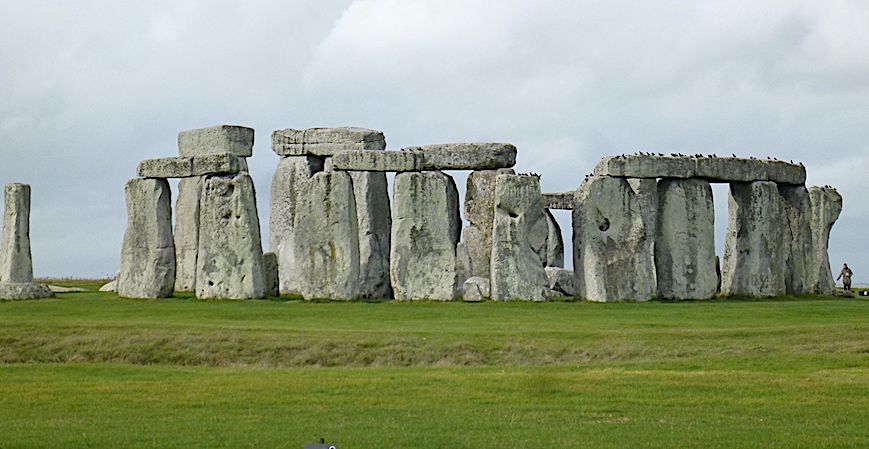
General view. The figure on the right illustrates the scale
On 21st September 2022 club member Colin Humphrey summarised the present understanding of Stonehenge, a World Heritage site on Salisbury Plain. The monument is composed of two very different building stones: the huge sarsens of the lintelled circle and its horseshoe of trilithons; and the much smaller bluestone inner circle and horseshoe; although only about half of nearly 150 orthostats (standing stones) remain. Sarsen is English Paleogene sedimentary rock; and bluestone is much older Welsh Ordovician igneous rock. The monument is clearly designed to allow the summer solstice sunrise to shine through several apertures between stones, and onto an altar stone.
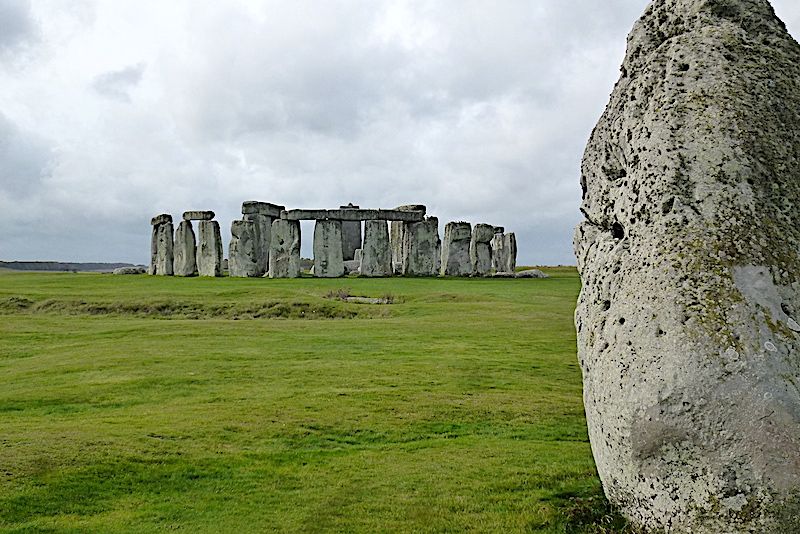
The sun must shine first through two heelstones (one is missing). Note root holes
The sarsens have long been assumed to come from the Marlborough Downs, 17 miles north of Stonehenge, the most abundant sarsen site in Britain. Recent X-ray fluoroscopy has definitely provenanced them to West Woods, just south of the Downs. Sarsen is silcrete, a silicified medium-to-coarse sandstone, very hard and erosion resistant. The sand was probably released by erosion of Lower Cretaceous Greensand (originally c100 Ma) exposed to the north, and conveyed by south flowing rivers to be deposited as the Reading Formation, sandy lenses on alluvial plains around 55 Ma ago in the early Cenozoic. Silcrete is found in many places across south-west Britain. The plains became vegetated and rootholes are frequent in the silcrete. Silicification probably occurred soon after, during the hot Paleocene-Eocene Thermal Maximum.
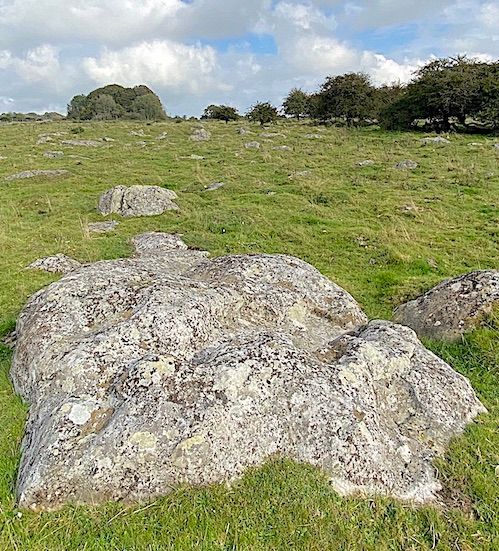
Silcrete boulders on Marlborough Downs
The bluestone comes from Mynydd Preseli, a small range of hills in north-east Pembrokeshire. Recent trace element analysis identifies various outcrops of 460 Ma intrusive dolerite, including some stones from Carn Goedog. There is a strong case that these and others were used to form a stone circle three miles west at Waen Mawn. The archaeologists now tentatively suggest, using several lines of evidence, that the Waun Mawn stone circle was then moved to Stonehenge. They also now conjecture that the local people carried their own stone circle to Stonehenge and remained there. It was a time of population movement; strontium analysis of cremation remains at Stonehenge include some people who were probably brought up on the rocks of west Wales. ‘Spotted’ dolerite (ie with phenocrysts) is not the only bluestone. There are others, including ‘unspotted’ dolerite and some extrusive rhyolite from the northern flank of Preseli at Rhosyfelin.
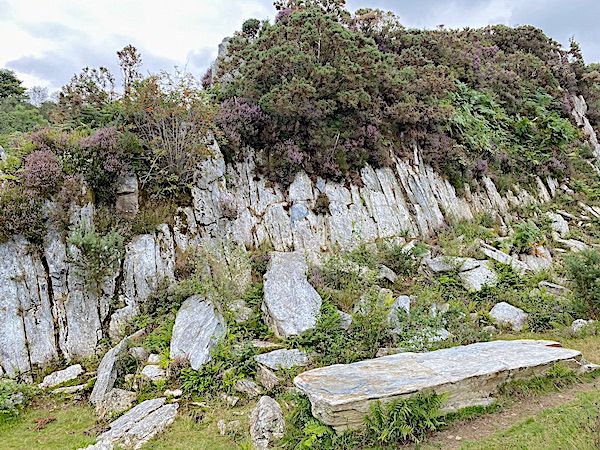
Rhosyfelin bluestone quarry
Around the outside of the present Stonehenge sarsen circle is a circle of now covered Aubrey Holes, named after its discoverer. We know from rock fragments and dating techniques that bluestones stood in these holes around 3000 BC. The much bigger sarsens were not installed until around 2500 BC, when the bluestones were then rearranged within the sarsens. Carbon dating of hearths at bluestone extraction sites in the Preseli hills suggest that a bluestone circle may have been constructed locally, at Waen Mawn for example, around 3400 BC. Stonehenge appears to have consisted of the smaller bluestones for hundreds of years before the more iconic sarsens arrived.
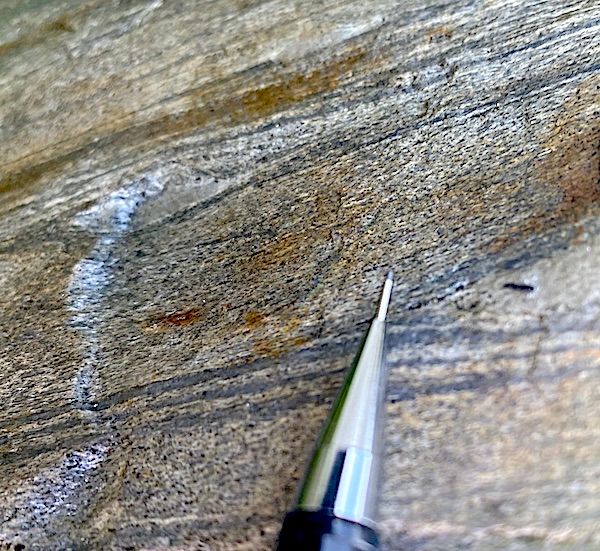
Rhyolite with fabric, a curious structure at Rhosyfelin
A dispute rages between a small number of people who believe the Welsh ice sheet transported the bluestones from Preseli at least to the Somerset Levels during the Anglian advance around 400.000 years ago. This has not been scientifically dismissed but the consensus now is that it is unlikely. Most glaciologists do not place the ice front far enough west and there is insufficient evidence of a train of large glacial erratics. Any argument that human transport is impossible is of course disproved by the movement of sarsens ten times the size, at least 15 miles.
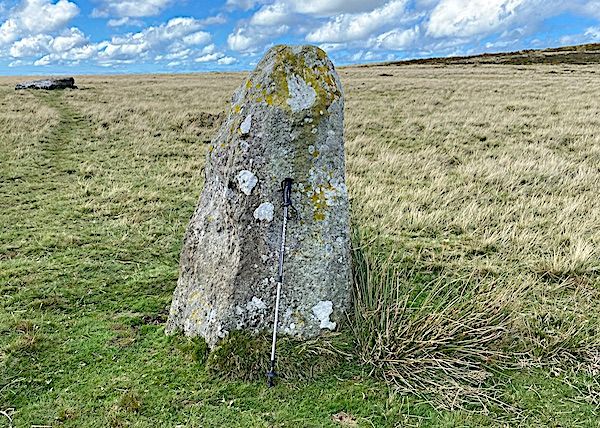
Solitary remaining standing bluestone at Waen Mawn circle in Wales. Possibly the previous site of the Stonehenge bluestones